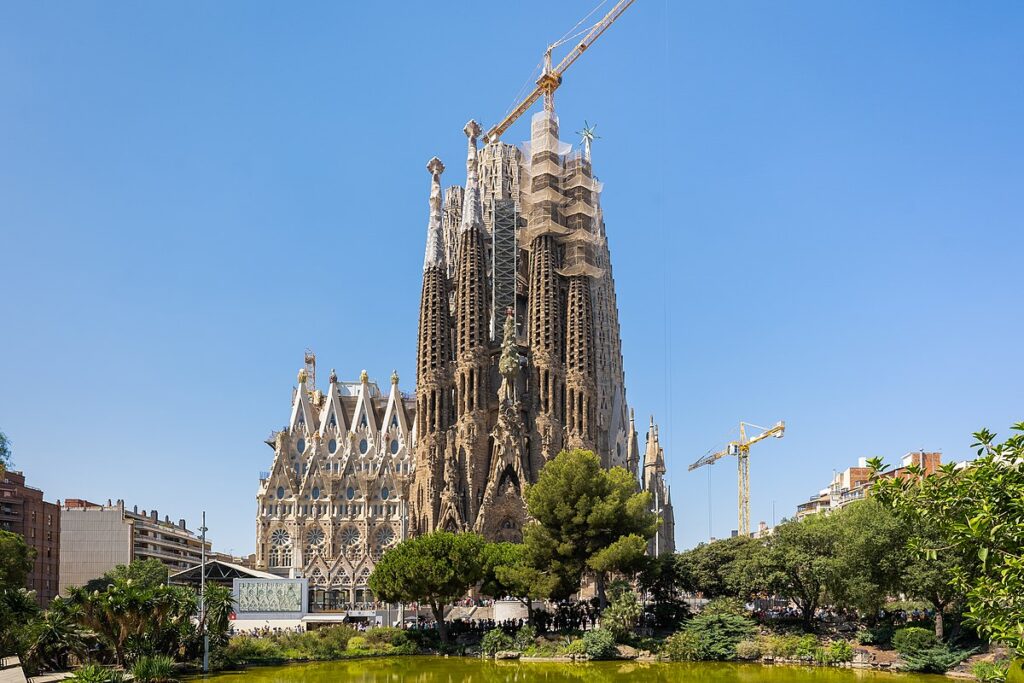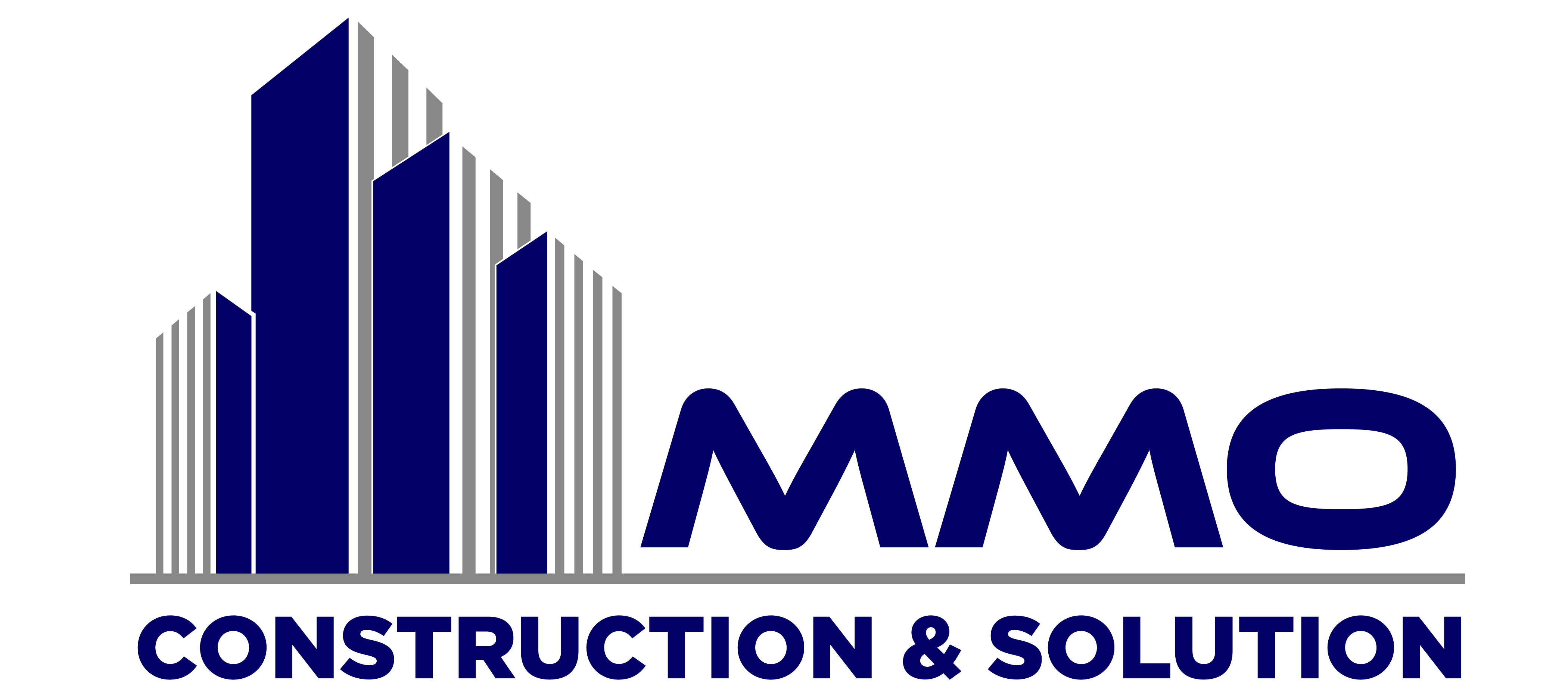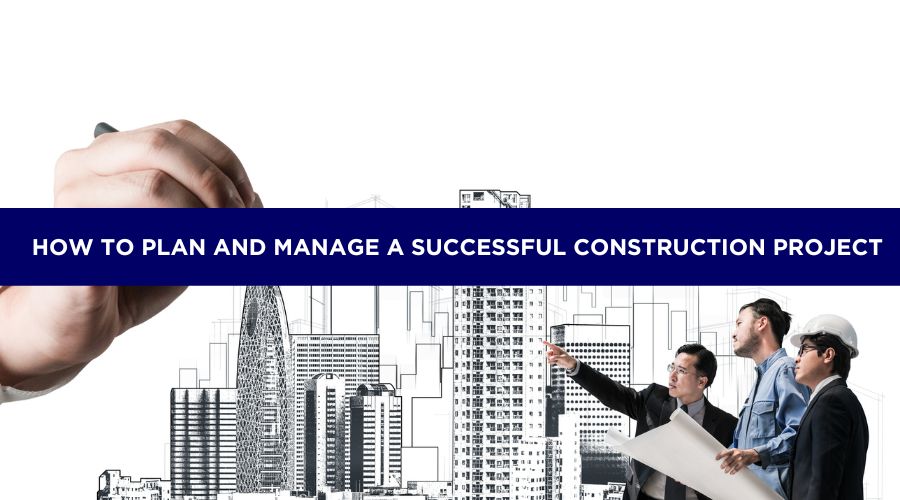- info@mmoconstruction.com
- 9399088243, 7828055501
- L-69, PHASE - 2, Mhow, Madhya Pradesh
15 Reasons Why You Should Hire a Professional Construction Company
If you are planning to build or renovate your home or office, you might be tempted to do it yourself or hire some cheap and inexperienced workers to save some money. However, this could be a big mistake that could cost you more in the long run. Construction projects are not easy and simple tasks that anyone can do. They require a lot of skills, knowledge, experience, and resources that only professional construction companies can provide. Here are 15 reasons why you should hire a professional construction company for your next project.
Best Quality Construction
One of the most important reasons to hire a professional construction company is quality. Professional construction companies have the expertise, equipment, and materials to deliver high-quality results that meet or exceed your expectations and standards. They also follow the best practices and industry standards to ensure that your project is done properly and safely. You don’t want to end up with a poorly built or renovated structure that has defects, damages, or hazards that could compromise your comfort, functionality, and value.
Time
Another reason to hire a professional construction company is time. Professional construction companies have the experience, manpower, and efficiency to complete your project on time and within your schedule. They also have the ability to handle any challenges or changes that may arise during the project and adjust accordingly. You don’t want to waste your time and energy on a project that takes longer than expected or that is constantly delayed or interrupted by various issues or problems.
Money
A third reason to hire a professional construction company is money. Professional construction companies have the budget, resources, and connections to save you money on your project. They can help you plan and manage your project in a cost-effective way and avoid any unnecessary or hidden expenses. They can also help you find the best deals and discounts on materials, labor, and services that suit your needs and preferences. You don’t want to spend more money than you have to or that you can afford on a project that is overpriced or that has unexpected costs.
Communication
A fourth reason to hire a professional construction company is communication. Professional construction companies have the skills, tools, and systems to communicate effectively with you and your stakeholders throughout the project. They can keep you informed and updated on the progress, status, and results of your project and answer any questions or concerns that you may have. They can also listen to your feedback and suggestions and incorporate them into your project as much as possible. You don’t want to be left in the dark or confused about your project or that has poor or no communication.
Reputation
A fifth reason to hire a professional construction company is reputation. Professional construction companies have the reputation, credibility, and trustworthiness to guarantee your satisfaction and peace of mind. They have the testimonials, reviews, and referrals from their previous and current clients to prove their quality, reliability, and professionalism. They also have the licenses, certifications, and accreditations from the relevant authorities and organizations to verify their competence, compliance, and legitimacy. You don’t want to risk your project or your reputation on a company that has a bad or no reputation or that is unqualified, unlicensed, or unregistered.
Warranty
A sixth reason to hire a professional construction company is warranty. Professional construction companies have the warranty, insurance, and guarantee to protect you and your project from any risks or liabilities. They have the warranty to cover any defects, damages, or errors that may occur during or after the project and to fix them at no extra cost. They also have the insurance to cover any accidents, injuries, or losses that may occur during or after the project and to compensate you accordingly. You don’t want to be responsible or liable for any problems or issues that may arise from your project or that has no warranty or insurance.
Customization
A seventh reason to hire a professional construction company is customization. Professional construction companies have the flexibility, creativity, and innovation to customize your project according to your specific needs, wants, and goals. They can help you design and build your project in a way that reflects your personality, style, and taste. They can also help you add any features, amenities, or enhancements that you desire or that are suitable for your project. You don’t want to settle for a generic or standard project that does not match your vision or that has no customization.
Safety
An eighth reason to hire a professional construction company is safety. Professional construction companies have the training, knowledge, and precautions to ensure the safety of your project and your people. They follow the safety rules and regulations that govern your project and your industry. They also use the safety equipment and measures that prevent or minimize any hazards or injuries that may occur during or after the project. You don’t want to jeopardize the safety of your project or your people or that has no safety.
Convenience
A ninth reason to hire a professional construction company is convenience. Professional construction companies have the convenience, ease, and comfort to make your project a smooth and hassle-free experience. They take care of everything from start to finish, from planning and designing to building and finishing. They also handle all the paperwork, permits, and inspections that are required for your project. You don’t have to worry about anything or do anything yourself. You can just sit back and relax and enjoy the results of your project or that has no convenience.
Value
A tenth reason to hire a professional construction company is value. Professional construction companies have the value, benefit, and advantage to make your project a worthwhile and rewarding investment. They can help you increase the value, appeal, and functionality of your property and make it more attractive and desirable for yourself and your potential buyers or tenants. They can also help you save or earn money in the long run by reducing your maintenance, repair, or utility costs or by increasing your income, profit, or return. You don’t want to lose or waste money on a project that does not add value or that has no value.
Expertise
An eleventh reason to hire a professional construction company is expertise. Professional construction companies have the expertise, skill, and knowledge to handle any type of project, no matter how big or small, simple or complex, easy or difficult. They have the experience and know-how to deal with any challenges or situations that may arise during or after the project and to find the best solutions and alternatives. They also have the specialization and qualification to handle any specific or unique aspects or requirements of your project. You don’t want to entrust your project to someone who does not know what they are doing or that has no expertise.
Resources
A twelfth reason to hire a professional construction company is resources. Professional construction companies have the resources, tools, and materials to execute your project efficiently and effectively. They have the latest and most advanced technology and equipment to perform your project with speed, accuracy, and quality. They also have the best and most suitable materials and products to use for your project with durability, functionality, and aesthetics. You don’t want to compromise your project with outdated or inadequate resources or that has no resources.
Network
A thirteenth reason to hire a professional construction company is network. Professional construction companies have the network, connections, and relationships to support your project and your goals. They have the access and influence to work with the best and most reputable subcontractors, suppliers, and service providers in the industry and to get the best deals and discounts from them. They also have the referrals and recommendations to help you find and work with other professionals or organizations that can help you with your project or your future endeavors. You don’t want to miss out on the opportunities and benefits that come from having a strong and reliable network or that has no network.
Innovation
A fourteenth reason to hire a professional construction company is innovation. Professional construction companies have the innovation, vision, and imagination to make your project a unique and remarkable creation. They have the ability and willingness to try new and different things and to explore new and different possibilities. They also have the passion and enthusiasm to make your project a fun and enjoyable process. You don’t want to have a boring or ordinary project that does not stand out or that has no innovation.
Satisfaction
A fifteenth and final reason to hire a professional construction company is satisfaction. Professional construction companies have the satisfaction, pride, and joy to make your project a successful and fulfilling achievement. They have the commitment and dedication to deliver your project with excellence and perfection. They also have the gratitude and appreciation to thank you for choosing them and trusting them with your project. You don’t want to have a disappointing or unsatisfying project that does not meet your needs or that has no satisfaction.
How to Plan and Manage a Successful Construction Project
Construction projects are complex and challenging endeavors that require careful planning and management. Whether you are building a new home, office, or infrastructure, you need to follow some best practices to ensure that your project is completed on time, on budget, and with high quality. Here are some tips on how to plan and manage a successful construction project.
Define the Scope and Objectives
The first step in any construction project is to define the scope and objectives. What are you trying to achieve? What are the deliverables and specifications? What are the constraints and risks? These questions will help you to clarify the scope and objectives of your project and set realistic expectations for yourself and your stakeholders.
Create a Detailed Project Plan
Once you have defined the scope and objectives, you need to create a detailed project plan that outlines the tasks, milestones, resources, costs, and timelines of your project. A project plan will help you to organize and coordinate your activities, track your progress, and communicate your status to your team and clients. You can use various tools and methods to create a project plan, such as Gantt charts, work breakdown structures, critical path analysis, and more
Assemble a Qualified Team
A construction project is only as good as the people who work on it. Therefore, you need to assemble a qualified team that has the skills, experience, and expertise to execute your project. You also need to define the roles and responsibilities of each team member and ensure that they have the necessary tools and equipment to perform their tasks. Additionally, you need to foster a collaborative and supportive work environment that encourages teamwork, communication, and problem-solving.
Manage the Risks and Changes
Construction projects are subject to various risks and changes that can affect their outcomes. For example, you may encounter unexpected delays, cost overruns, design errors, quality issues, safety hazards, and more. To manage these risks and changes, you need to identify, analyze, and prioritize them and develop contingency plans and mitigation strategies. You also need to monitor and control the risks and changes throughout the project and update your project plan accordingly.
Review and Evaluate the Results
The final step in any construction project is to review and evaluate the results. You need to compare the actual performance and outcomes of your project with the planned ones and identify the deviations and discrepancies. You also need to measure the satisfaction and feedback of your clients and stakeholders and determine if you have met their expectations and requirements. Furthermore, you need to document the lessons learned and best practices from your project and apply them to your future projects.
10 Inspiring Examples of Modern Architecture and Design
Modern architecture and design are the expressions of the contemporary culture, technology, and environment. Modern architecture and design are characterized by innovation, creativity, and functionality. They aim to create spaces and structures that are aesthetically pleasing, environmentally friendly, and socially relevant. In this blog, we will explore 10 inspiring examples of modern architecture and design that showcase the diversity and excellence of this field.
The Guggenheim Museum Bilbao

The Guggenheim Museum Bilbao is a museum of modern and contemporary art located in Bilbao, Spain. It was designed by the renowned architect Frank Gehry and opened in 1997. The museum is famous for its distinctive and dynamic shape, which resembles a ship or a fish. The museum is made of titanium, limestone, and glass, and reflects the light and the water of the nearby river. The museum is a masterpiece of deconstructivist architecture, which challenges the conventional notions of form and function.
The Burj Khalifa

The Burj Khalifa is a skyscraper located in Dubai, United Arab Emirates. It is the tallest building in the world, with a height of 828 meters. It was designed by the firm Skidmore, Owings & Merrill and completed in 2010. The building is inspired by the Islamic architecture and the desert flower Hymenocallis. The building consists of a central core and three wings that taper and twist as they rise. The building is a marvel of engineering, technology, and sustainability.
The Sydney Opera House

The Sydney Opera House is a performing arts center located in Sydney, Australia. It was designed by the Danish architect Jørn Utzon and opened in 1973. The opera house is famous for its iconic and elegant shape, which resembles a sail or a shell. The opera house is made of concrete, steel, and ceramic tiles, and sits on a platform surrounded by water. The opera house is a masterpiece of expressionist architecture, which conveys emotion and movement.
The Beijing National Stadium

The Beijing National Stadium is a stadium located in Beijing, China. It was designed by the Swiss architects Herzog & de Meuron and completed in 2008. The stadium is also known as the Bird’s Nest, because of its intricate and organic structure. The stadium is made of steel and concrete, and forms a mesh-like network that allows light and air to pass through. The stadium is a masterpiece of parametric architecture, which uses algorithms and computer simulations to generate complex and adaptive forms.
The Louvre Pyramid

The Louvre Pyramid is a glass and metal pyramid located in the courtyard of the Louvre Museum in Paris, France. It was designed by the Chinese-American architect I.M. Pei and completed in 1989. The pyramid is a modern and minimalist addition to the historic and classical museum. The pyramid is made of glass and steel, and creates a contrast and a harmony with the surrounding buildings. The pyramid is a masterpiece of geometric architecture, which uses simple and pure shapes to create a powerful and elegant effect.
The Fallingwater

The Fallingwater is a house located in Mill Run, Pennsylvania, USA. It was designed by the American architect Frank Lloyd Wright and completed in 1939. The house is also known as the Kaufmann Residence, because it was built for the Kaufmann family as a weekend retreat. The house is famous for its integration and interaction with the natural environment, especially the waterfall that runs under the house. The house is made of stone, concrete, and wood, and follows the principles of organic architecture, which respects and enhances the nature and the human spirit.
The Sagrada Familia

The Sagrada Familia is a basilica located in Barcelona, Spain. It was designed by the Spanish architect Antoni Gaudí and started in 1882. The basilica is still under construction and is expected to be completed in 2026. The basilica is famous for its rich and elaborate style, which combines the Gothic and the Art Nouveau influences. The basilica is made of stone, ceramic, and glass, and features a variety of sculptures, mosaics, and stained glass windows. The basilica is a masterpiece of modernist architecture, which expresses the creativity and the spirituality of the architect and the people.
The Lotus Temple

The Lotus Temple is a Bahá’í House of Worship located in New Delhi, India. It was designed by the Iranian architect Fariborz Sahba and completed in 1986. The temple is famous for its beautiful and symbolic shape, which resembles a lotus flower. The temple is made of marble, concrete, and steel, and consists of 27 petals that form nine sides and nine entrances. The temple is a masterpiece of biomimetic architecture, which imitates and learns from the nature and the living organisms.
The Pompidou Center

The Pompidou Center is a cultural center located in Paris, France. It was designed by the Italian architect Renzo Piano and the British architect Richard Rogers and completed in 1977. The center is famous for its innovative and unconventional design, which exposes and celebrates the functional elements of the building, such as the pipes, ducts, and wires. The center is made of steel, glass, and plastic, and features a variety of colors and shapes. The center is a masterpiece of high-tech architecture, which showcases the industrial and technological aspects of the modern society.
The Habitat 67

The Habitat 67 is a residential complex located in Montreal, Canada. It was designed by the Israeli-Canadian architect Moshe Safdie and completed in 1967. The complex is famous for its modular and futuristic design, which consists of 354 prefabricated concrete units that are arranged in various configurations and orientations. The complex is made of concrete, steel, and wood, and creates a sense of community and diversity among the residents. The complex is a masterpiece of brutalist architecture, which uses raw and rough materials to create a bold and expressive statement.
12 Common Mistakes to Avoid When Renovating Your Home
Renovating your home can be an exciting and rewarding experience. You can improve the appearance, functionality, and value of your home and make it more comfortable and enjoyable for yourself and your family. However, renovating your home can also be a challenging and stressful process. You can encounter various problems and issues that can delay, disrupt, or ruin your project. To avoid these problems and issues, you need to avoid some common mistakes that many homeowners make when renovating their home. Here are 12 common mistakes to avoid when renovating your home.
Not Having a Clear Vision and Plan
The first mistake to avoid when renovating your home is not having a clear vision and plan. You need to have a clear idea of what you want to achieve and why you want to do it. You also need to have a detailed plan that outlines the scope, budget, timeline, and specifications of your project. By having a clear vision and plan, you can avoid confusion, miscommunication, and conflicts among yourself and your contractors and suppliers. You can also avoid wasting time, money, and resources on unnecessary or unwanted changes and revisions.
Not Hiring the Right Professionals
The second mistake to avoid when renovating your home is not hiring the right professionals. You need to hire qualified, experienced, and reputable professionals who can execute your project according to your vision and plan. You also need to hire professionals who are licensed, insured, and bonded and who have the necessary permits and approvals for your project. By hiring the right professionals, you can avoid delays, errors, and damages that can compromise the quality and safety of your project. You can also avoid legal and financial liabilities and disputes that can arise from hiring the wrong professionals.
Not Setting a Realistic Budget
The third mistake to avoid when renovating your home is not setting a realistic budget. You need to set a realistic budget that reflects the actual costs and expenses of your project. You also need to include a contingency fund that covers the unexpected and unforeseen costs and expenses that may occur during your project. By setting a realistic budget, you can avoid overspending and running out of money before completing your project. You can also avoid compromising the quality and scope of your project by cutting corners and making sacrifices.
Not Communicating Effectively
The fourth mistake to avoid when renovating your home is not communicating effectively. You need to communicate effectively with your contractors, suppliers, and other stakeholders involved in your project. You also need to communicate effectively with your family members and neighbors who may be affected by your project. By communicating effectively, you can avoid misunderstandings, misinterpretations, and mistakes that can cause delays, conflicts, and dissatisfaction. You can also avoid complaints, grievances, and disputes that can arise from poor communication.
Not Following the Rules and Regulations
The fifth mistake to avoid when renovating your home is not following the rules and regulations. You need to follow the rules and regulations that govern your project, such as the building codes, zoning laws, and homeowners association guidelines. You also need to obtain the necessary permits and inspections that are required for your project. By following the rules and regulations, you can avoid fines, penalties, and violations that can result from non-compliance. You can also avoid safety hazards and legal issues that can arise from breaking the rules and regulations.
Not Being Flexible and Adaptable
The sixth mistake to avoid when renovating your home is not being flexible and adaptable. You need to be flexible and adaptable to the changes and challenges that may occur during your project. You also need to be flexible and adaptable to the feedback and suggestions that you may receive from your contractors, suppliers, and other stakeholders. By being flexible and adaptable, you can avoid frustration, disappointment, and stress that can result from being rigid and stubborn. You can also avoid missing out on opportunities and improvements that can enhance your project.
Not Prioritizing the Essentials
The seventh mistake to avoid when renovating your home is not prioritizing the essentials. You need to prioritize the essentials that are crucial and important for your project, such as the structural, mechanical, electrical, and plumbing systems. You also need to prioritize the essentials that are vital and valuable for your home, such as the security, comfort, and efficiency features. By prioritizing the essentials, you can avoid neglecting and overlooking the aspects that can affect the functionality and performance of your project. You can also avoid regretting and resenting the aspects that can affect the quality and value of your home.
Not Considering the Future
The eighth mistake to avoid when renovating your home is not considering the future. You need to consider the future implications and consequences of your project, such as the maintenance, durability, and sustainability of your materials and components. You also need to consider the future needs and preferences of yourself and your family, such as the accessibility, adaptability, and versatility of your space and layout. By considering the future, you can avoid making short-sighted and impulsive decisions that can cost you more time, money, and resources in the long run. You can also avoid making outdated and irrelevant decisions that can limit your options and opportunities in the future.
Not Paying Attention to the Details
The ninth mistake to avoid when renovating your home is not paying attention to the details. You need to pay attention to the details that can make a difference and an impact on your project, such as the finishes, fixtures, and fittings. You also need to pay attention to the details that can create a difference and an impact on your home, such as the colors, textures, and patterns. By paying attention to the details, you can avoid compromising and sacrificing the aesthetics and appeal of your project. You can also avoid missing and forgetting the elements that can add character and personality to your home.
Not Testing and Inspecting Your Work
The tenth mistake to avoid when renovating your home is not testing and inspecting your work. You need to test and inspect your work before, during, and after your project to ensure that everything is working properly and correctly. You also need to test and inspect your work to ensure that everything is meeting your expectations and standards. By testing and inspecting your work, you can avoid discovering and fixing the problems and issues that can arise from faulty and defective work. You can also avoid experiencing and suffering from the problems and issues that can arise from unsatisfactory and substandard work.
Not Cleaning and Organizing Your Space
The eleventh mistake to avoid when renovating your home is not cleaning and organizing your space. You need to clean and organize your space before, during, and after your project to ensure that your space is safe and sanitary. You also need to clean and organize your space to ensure that your space is comfortable and enjoyable. By cleaning and organizing your space, you can avoid exposing and harming yourself and your family to the dust, debris, and chemicals that can accumulate from your project. You can also avoid cluttering and crowding your space with the tools, materials, and equipment that can accumulate from your project.
Not Celebrating and Enjoying Your Results
The twelfth and final mistake to avoid when renovating your home is not celebrating and enjoying your results. You need to celebrate and enjoy your results after completing your project to appreciate and acknowledge your efforts and achievements. You also need to celebrate and enjoy your results to experience and savor the benefits and rewards of your project. By celebrating and enjoying your results, you can avoid feeling dissatisfied and unfulfilled with your project. You can also avoid taking for granted and underestimating your project.
Mastering Hotel Construction: A Step-by-Step Guide to Building Your Dream Hospitality Project
7 Ways to Save Money on Your Construction Materials
Construction materials are one of the major expenses of any construction project. Whether you are building a new home, office, or infrastructure, you want to make sure that you get the best quality and value for your money. However, you also want to avoid overspending and wasting your resources. How can you save money on your construction materials without compromising your project’s quality and safety? Here are seven ways that you can try.
Plan Ahead and Budget Wisely
The first and most important way to save money on your construction materials is to plan ahead and budget wisely. You need to have a clear and realistic idea of what you need, how much you need, and how much you can afford. You also need to account for the contingencies and uncertainties that may arise during your project. By planning ahead and budgeting wisely, you can avoid unnecessary purchases, delays, and errors that can cost you time and money.
Compare and Negotiate Prices
The second way to save money on your construction materials is to compare and negotiate prices. You need to do your research and shop around for the best deals and discounts that you can find. You can use online platforms, catalogs, and referrals to compare the prices and quality of different suppliers and vendors. You can also negotiate the prices and terms of your contracts and agreements to get the most favorable and flexible conditions. By comparing and negotiating prices, you can save money and get the best value for your money
Buy in Bulk and Stock Up
The third way to save money on your construction materials is to buy in bulk and stock up. You need to estimate the quantity and frequency of your material needs and order them in advance and in large quantities. You can also take advantage of the seasonal and promotional offers and discounts that are available for bulk purchases. By buying in bulk and stocking up, you can save money and reduce the risk of running out of materials or having to pay for expedited delivery.
Use Local and Sustainable Materials
The fourth way to save money on your construction materials is to use local and sustainable materials. You need to choose materials that are locally sourced, produced, and available and that have a low environmental impact and a high social value. You can also use materials that are recycled, renewable, and biodegradable and that can reduce the energy and water consumption and waste generation of your project. By using local and sustainable materials, you can save money and support the local economy and community and protect the environment.
Optimize and Standardize Your Design
The fifth way to save money on your construction materials is to optimize and standardize your design. You need to design your project in a way that maximizes the efficiency and functionality of your space and minimizes the complexity and waste of your materials. You can also use standard and modular sizes and shapes of your materials and components that can reduce the cutting and fitting costs and increase the compatibility and interchangeability of your parts. By optimizing and standardizing your design, you can save money and improve the quality and performance of your project.
Reuse and Recycle Your Materials
The sixth way to save money on your construction materials is to reuse and recycle your materials. You need to look for opportunities and ways to reuse and recycle your existing or leftover materials and components that are still in good condition and quality. You can also donate or sell your unwanted or surplus materials and components to other projects or organizations that can use them. By reusing and recycling your materials, you can save money and reduce the material use and waste of your project.
7 Ways to Save Money on Your Construction Materials
The seventh and final way to save money on your construction materials is to monitor and control your material management. You need to have a system and a team that can track and measure the inventory, delivery, storage, usage, and disposal of your materials and components. You also need to have a system and a team that can prevent and detect the errors, damages, losses, and thefts of your materials and components. By monitoring and controlling your material management, you can save money and ensure the accuracy and security of your project.
UNDERSTANDING FOUNDATION REPAIR SIGNS, CAUSES, AND SOLUTIONS
The Ultimate Guide to Green Building Practices and Benefits
Green building is the practice of designing, constructing, and operating buildings in a way that minimizes their environmental impact and enhances their social and economic value. Green building practices aim to reduce the consumption of energy, water, and materials, improve the indoor and outdoor air quality, and promote the health and well-being of the occupants and the community. Green building benefits include lower operating costs, higher productivity and performance, increased marketability and competitiveness, and reduced greenhouse gas emissions and climate change risks. In this guide, we will explore some of the key green building practices and benefits and how you can implement them in your own projects.
Green Building Practices
There are many green building practices that you can adopt to make your buildings more sustainable and efficient. Some of the most common ones are:
- Site selection and planning: Choose a site that is suitable for your project and that minimizes the disturbance of the natural environment and the existing infrastructure. Plan your site layout and orientation to optimize the use of natural resources such as sunlight, wind, and vegetation and to reduce the exposure to noise, pollution, and hazards.
- Energy efficiency: Use passive design strategies such as insulation, shading, ventilation, and daylighting to reduce the heating and cooling loads of your building. Install energy-efficient appliances, lighting, and systems that use renewable energy sources such as solar, wind, and biomass. Implement energy management and monitoring systems that control and optimize the energy consumption and generation of your building.
- Water efficiency: Use water-efficient fixtures, appliances, and systems that reduce the water demand and waste of your building. Collect and reuse rainwater, greywater, and stormwater for irrigation, flushing, and cleaning purposes. Implement water management and treatment systems that prevent and minimize the water pollution and runoff of your building.
- Water efficiency: Use water-efficient fixtures, appliances, and systems that reduce the water demand and waste of your building. Collect and reuse rainwater, greywater, and stormwater for irrigation, flushing, and cleaning purposes. Implement water management and treatment systems that prevent and minimize the water pollution and runoff of your building.
- Material efficiency: Use durable, recycled, renewable, and low-impact materials that reduce the embodied energy and emissions of your building. Minimize the material use and waste of your building by applying prefabrication, modularization, and deconstruction techniques. Implement material management and recycling systems that divert and recover the waste materials of your building.
- Indoor environmental quality: Use natural and low-emitting materials, products, and finishes that improve the indoor air quality and comfort of your building. Provide adequate ventilation, filtration, and humidification systems that maintain the optimal temperature, humidity, and air exchange of your building. Incorporate biophilic design elements such as plants, natural light, and views that enhance the psychological and physiological well-being of the occupants.
- Innovation and education: Use innovative and integrated design approaches that address the multiple aspects and goals of green building. Engage and educate the stakeholders, such as the owners, designers, contractors, operators, and users, about the green building practices and benefits and how they can contribute to them.
Green Building Benefits
There are many green building benefits that you can enjoy and share with your stakeholders. Some of the most significant ones are:
- Economic benefits: Green buildings can save you money by reducing the operating and maintenance costs of your building. They can also increase your revenue by improving the productivity and performance of your occupants and by enhancing the marketability and competitiveness of your building. Additionally, they can reduce your risks by increasing the resilience and adaptability of your building to the changing environmental and social conditions.
- Environmental benefits: Green buildings can protect the environment by reducing the consumption of natural resources and the generation of waste and emissions of your building. They can also improve the environment by restoring and enhancing the natural ecosystems and biodiversity of your site and by mitigating and adapting to the effects of climate change.
- Social benefits: Green buildings can benefit the society by improving the health and well-being of your occupants and the community. They can also foster the social and cultural values and identity of your site and by promoting the awareness and participation of your stakeholders in the green building movement
How to Implement Green Building Practices and Benefits
If you are interested in implementing green building practices and benefits in your own projects, here are some steps that you can follow:
- Set your green building goals and objectives: Define what you want to achieve and why you want to do it. Consider the needs and expectations of your stakeholders and the opportunities and challenges of your site and project.
- Conduct a green building assessment and benchmarking: Assess the current performance and impact of your building and compare it with the best practices and standards of green building. Identify the gaps and areas of improvement and prioritize the actions and measures that you need to take.
- Develop a green building strategy and plan: Develop a comprehensive and coherent strategy and plan that outlines the green building practices and benefits that you want to implement and how you will do it. Define the roles and responsibilities of your team and the resources and tools that you will use.
- Implement and monitor your green building plan: Execute your green building plan and monitor its progress and results. Track and measure the performance and impact of your building and the satisfaction and feedback of your stakeholders. Adjust and improve your plan as needed and as you learn from your experience.
- Evaluate and communicate your green building outcomes: Evaluate the outcomes and achievements of your green building plan and communicate them to your stakeholders and the public. Celebrate and recognize your successes and share your lessons learned and best practices.
Want to Know about UNDERSTANDING FOUNDATION REPAIR SIGNS, CAUSES, AND SOLUTIONS
How to Plan and Manage a Successful Construction Project
Construction projects are complex and challenging endeavors that require careful planning and management. Whether you are building a new home, office, or infrastructure, you need to follow some best practices to ensure that your project is completed on time, on budget, and with high quality. Here are some tips on how to plan and manage a successful construction project.
Define the Scope and Objectives
The first step in any construction project is to define the scope and objectives. What are you trying to achieve? What are the deliverables and specifications? What are the constraints and risks? These questions will help you to clarify the scope and objectives of your project and set realistic expectations for yourself and your stakeholders.
Create a Detailed Project Plan
Once you have defined the scope and objectives, you need to create a detailed project plan that outlines the tasks, milestones, resources, costs, and timelines of your project. A project plan will help you to organize and coordinate your activities, track your progress, and communicate your status to your team and clients. You can use various tools and methods to create a project plan, such as Gantt charts, work breakdown structures, critical path analysis, and more.
Assemble a Qualified Team
A construction project is only as good as the people who work on it. Therefore, you need to assemble a qualified team that has the skills, experience, and expertise to execute your project. You also need to define the roles and responsibilities of each team member and ensure that they have the necessary tools and equipment to perform their tasks. Additionally, you need to foster a collaborative and supportive work environment that encourages teamwork, communication, and problem-solving.
Manage the Risks and Changes
Construction projects are subject to various risks and changes that can affect their outcomes. For example, you may encounter unexpected delays, cost overruns, design errors, quality issues, safety hazards, and more. To manage these risks and changes, you need to identify, analyze, and prioritize them and develop contingency plans and mitigation strategies. You also need to monitor and control the risks and changes throughout the project and update your project plan accordingly.
Review and Evaluate the Results
The final step in any construction project is to review and evaluate the results. You need to compare the actual performance and outcomes of your project with the planned ones and identify the deviations and discrepancies. You also need to measure the satisfaction and feedback of your clients and stakeholders and determine if you have met their expectations and requirements. Furthermore, you need to document the lessons learned and best practices from your project and apply them to your future projects.













